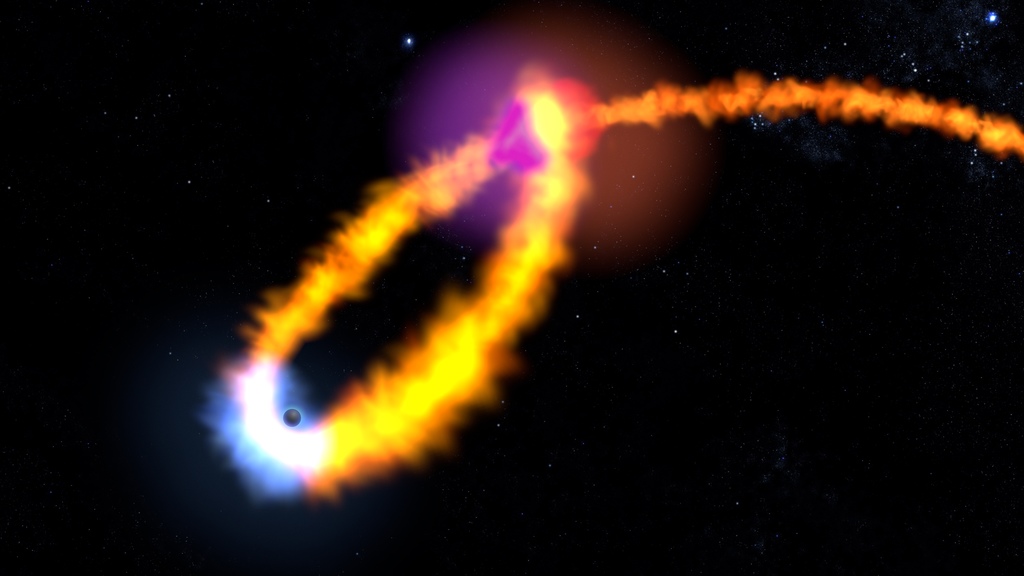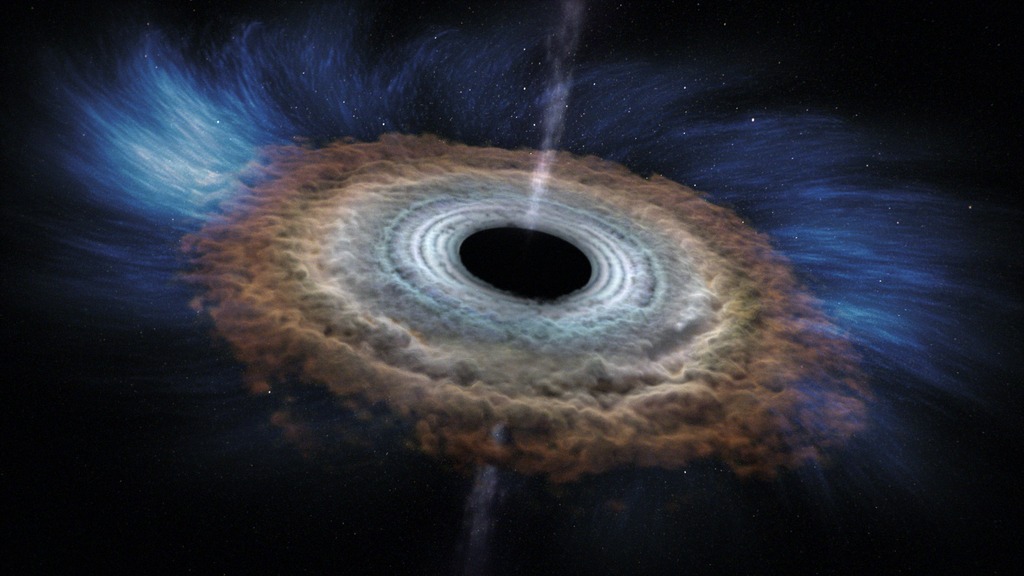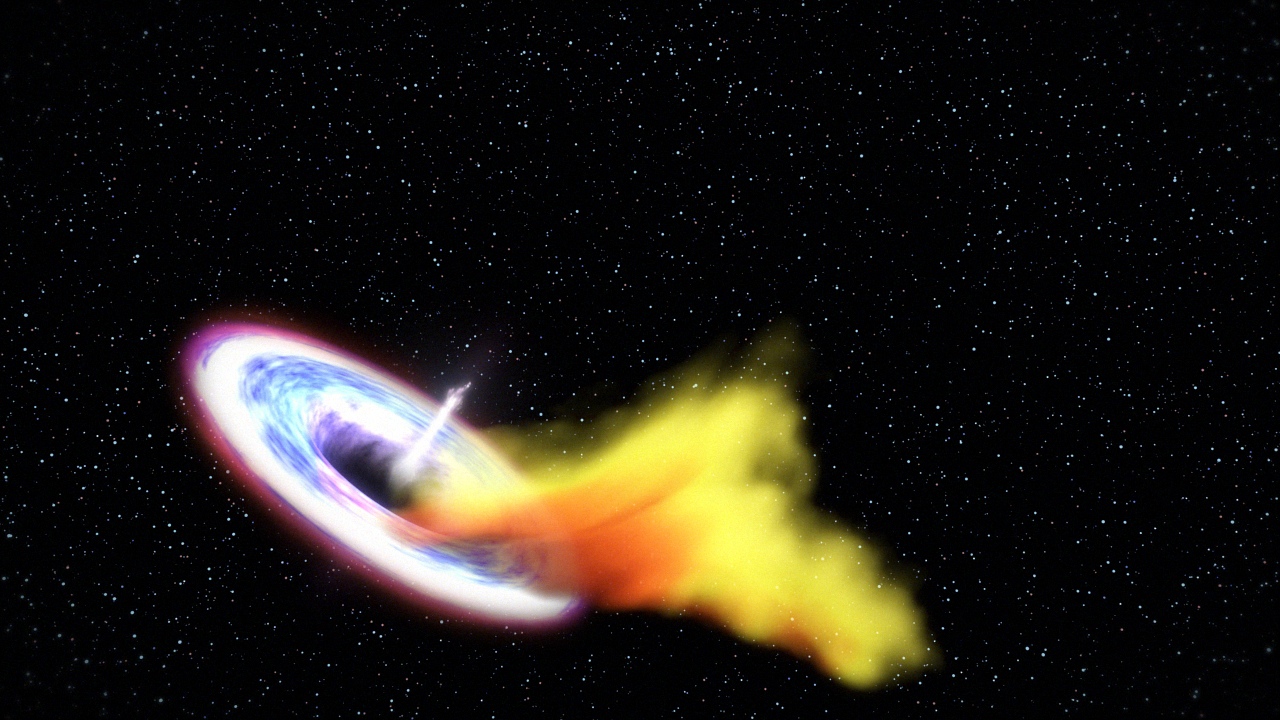Massive Black Hole Shreds Passing Star
A star approaching too close to a massive black hole is torn apart by tidal forces, as shown in this artist's rendering. Filaments containing much of the star's mass fall toward the black hole. Eventually these gaseous filaments merge into a smooth, hot disk glowing brightly in X-rays. As the disk forms, its central region heats up tremendously, which drives a flow of material, called a wind, away from the disk.
Credit: NASA's Goddard Space Flight Center/CI Lab
Watch this video on the NASA Goddard YouTube channel.
For complete transcript, click here.
This artist’s rendering illustrates new findings about a star shredded by a black hole. When a star wanders too close to a black hole, intense tidal forces rip the star apart. In these events, called “tidal disruptions,” some of the stellar debris is flung outward at high speed while the rest falls toward the black hole. This causes a distinct X-ray flare that can last for a few years. NASA’s Chandra X-ray Observatory, Swift Gamma-ray Burst Explorer, and ESA/NASA’s XMM-Newton collected different pieces of this astronomical puzzle in a tidal disruption event called ASASSN-14li, which was found in an optical search by the All-Sky Automated Survey for Supernovae (ASAS-SN) in November 2014. The event occurred near a supermassive black hole estimated to weigh a few million times the mass of the sun in the center of PGC 043234, a galaxy that lies about 290 million light-years away. Astronomers hope to find more events like ASASSN-14li to test theoretical models about how black holes affect their environments.
Same as above. No music or editing.

Astronomers have observed material being blown away from a black hole after it tore a star apart, using a trio of X-ray telescopes. The artist's illustration depicts material from a shredded star (reddish-orange streak) that is pulled towards the black hole. The X-ray spectrum obtained with Chandra provides information about how material starts falling toward the black hole, plus evidence for a wind carrying some of the material away from the black hole.
Credit: Spectrum: NASA/CXC/U.Michigan/J.Miller et al.; Illustration: NASA/CXC/M.Weiss

3840x2160 resolution still image from animation.
For More Information
Credits
Please give credit for this item to:
NASA's Goddard Space Flight Center. However, individual items should be credited as indicated above.
-
Animator
- Brian Monroe (USRA)
-
Producer
- Scott Wiessinger (USRA)
-
Writer
- Francis Reddy (Syneren Technologies)
-
Scientist
- Jon Miller (University of Michigan)
Missions
This page is related to the following missions:Series
This page can be found in the following series:Release date
This page was originally published on Wednesday, October 21, 2015.
This page was last updated on Wednesday, May 3, 2023 at 1:49 PM EDT.




